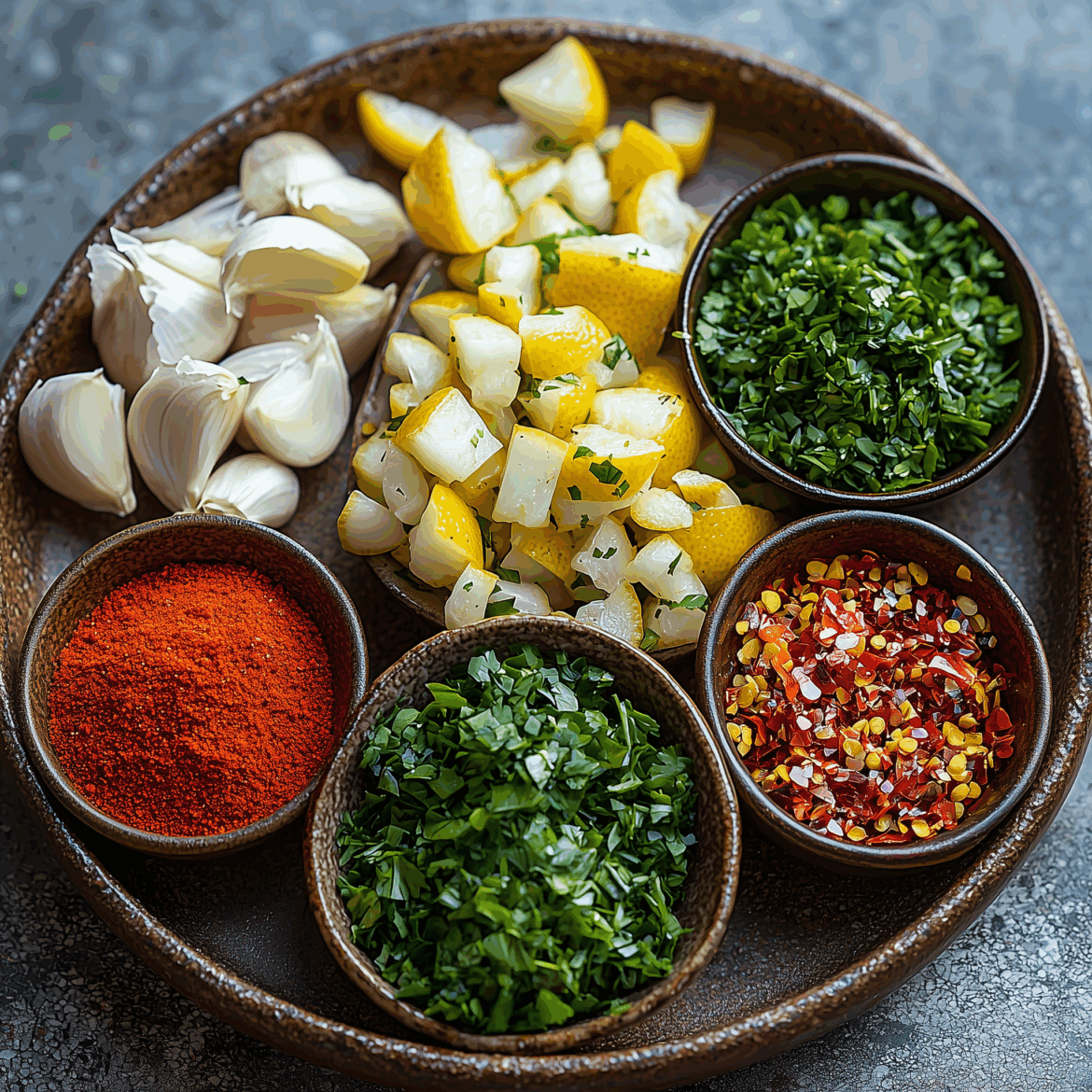Chermoula is a fragrant North African marinade and sauce that adds depth and complexity to a variety of dishes. While it is commonly associated with Moroccan cuisine, variations exist throughout the region, with Tunisia offering a spicier take on this beloved blend. Understanding the differences between Moroccan and Tunisian chermoula can help you choose the right version for your cooking needs. In this guide, we’ll explore both styles, their key ingredients, and how to prepare them at home.
Moroccan Chermoula
Flavour Profile
Moroccan chermoula is known for its fresh, citrusy, and herbaceous flavour. It features a balanced blend of coriander, parsley, and warm spices such as cumin and paprika. This version is typically mild in heat, with a tangy kick from preserved lemons or fresh lemon juice.
Key Ingredients
- Fresh coriander and parsley
- Garlic
- Olive oil
- Lemon juice or preserved lemon
- Ground cumin and coriander
- Paprika
- Chilli flakes (optional)
How It’s Used
The Moroccan version is a versatile marinade used for grilled or roasted fish, lamb, chicken, and vegetables. It is also stirred into couscous or drizzled over finished dishes for an extra layer of flavour. Try our authentic Moroccan Chermoula recipe here!
Tunisian Chermoula
Flavour Profile
Tunisian chermoula has a bolder, spicier taste, with a richer, more intense profile. It incorporates dried chillies or harissa, making it noticeably hotter than its Moroccan counterpart. The addition of caramelised onions and sometimes tomatoes gives the Tunisian version a slightly sweet undertone.
Key Ingredients
- Dried red chillies or harissa
- Caramelised onions
- Garlic
- Olive oil
- Ground cumin and caraway seeds
- Vinegar or lemon juice
- Tomato paste (optional)
How It’s Used
The Tunisian version is commonly paired with seafood, particularly salted fish, and is used in stews or as a base for slow-cooked dishes. Its spicy and slightly smoky flavour makes it a popular condiment alongside meats and grilled vegetables.
Moroccan vs. Tunisian: Key Differences
| Feature | Moroccan | Tunisian |
|---|---|---|
| Flavour | Fresh, tangy, herbaceous | Spicy, smoky, slightly sweet |
| Heat Level | Mild to medium | Medium to hot |
| Main Herbs | Coriander, parsley | Garlic, onions |
| Texture | Smooth, sauce-like | Thick, paste-like |
| Common Uses | Marinade, dressing | Stews, slow-cooked dishes |
Which One Should You Use?
If you’re after a bright, herbaceous marinade that works well with seafood, grilled meats, or roasted vegetables, Moroccan chermoula is the way to go. It enhances dishes with its citrusy freshness and mild warmth. Try it with our Chermoula Lamb Chops, Chermoula Roasted Vegetables, or Chermoula Spiced Chicken.
On the other hand, if you prefer a bold, spicy kick with a smoky depth, Tunisian chermoula is your best bet. It’s perfect for slow-cooked dishes and pairs beautifully with fish, stews, and grilled meats. Try it in a hearty Tunisian seafood stew or use it as a flavour-packed base for braised dishes.
Both Moroccan and Tunisian chermoula bring incredible depth to North African cuisine, each with its own unique flair. Whether you prefer the vibrant freshness of Moroccan chermoula or the fiery richness of Tunisian chermoula, experimenting with both will open up a world of flavour possibilities in your kitchen.

Never Miss a Bite!
Get delicious new recipes weekly, cooking tips, exclusive discounts, and food inspiration delivered straight to your inbox. Sign up to our free newsletter today!
